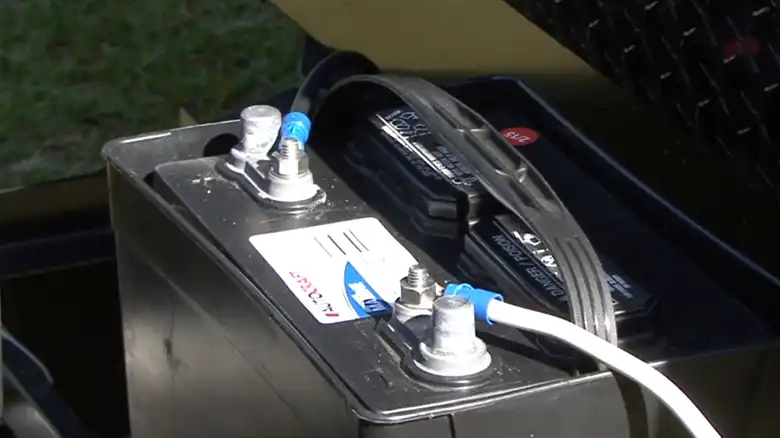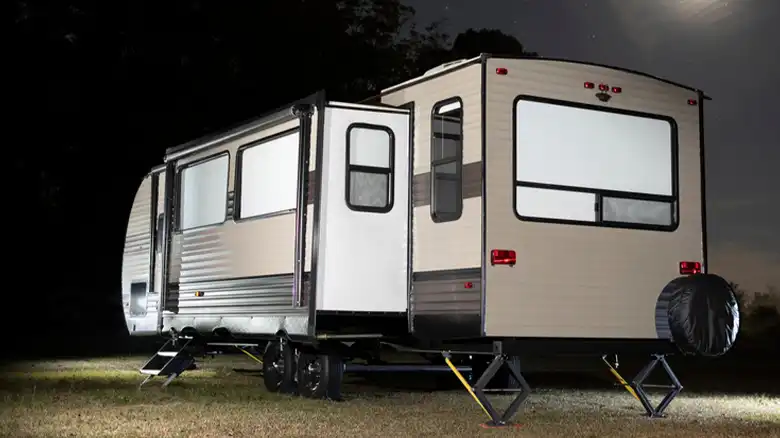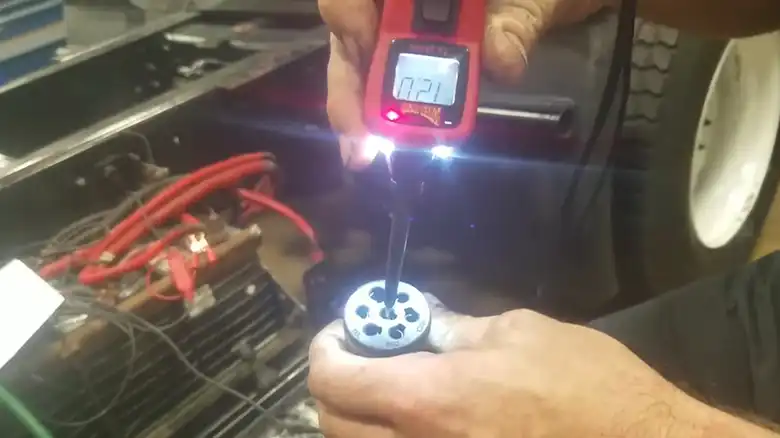RV batteries are an essential part of any RV trip, providing power to your lights, appliances, and other devices when you’re not connected to shore power. But what happens when your RV battery is charged but you’re not getting any power?
There are a few possible reasons for this problem. The most common is a tripped circuit breaker. Circuit breakers are designed to protect your electrical system from overload, and they can trip if you’re drawing too much power from your battery.
Finally, it’s also possible that your battery is simply bad. Lead-acid batteries have a limited lifespan, and they can eventually fail even if they’re properly maintained.

If you’re not getting any power from your fully charged RV battery, the first thing you should do is check the circuit breakers. If you find a tripped breaker, simply reset it and see if that restores power.
Check Circuit Breakers
To check the circuit breakers, open the electrical panel. The circuit breakers are typically located inside the panel, and they will be labeled with the devices or appliances that they protect.
To see if a circuit breaker has tripped, look for a lever that is in the middle position between ON and OFF. If a breaker has tripped, the lever will be between these two positions.
To reset a tripped circuit breaker, simply move the lever to the OFF position and then back to the ON position. If the breaker trips again immediately, it means that there is a problem with the device or appliance that it protects.
If you find a tripped circuit breaker and reset it to restore power, then the problem is solved. However, if resetting the breaker does not restore power, or if the breaker trips again immediately, then the problem is likely more serious and you may need to call an electrician.
Inspect Electrical Connections
To check the connections between your RV battery and your RV’s electrical system:
- Open the battery compartment.
- Locate the battery terminals. The positive terminal is typically marked with a red “+” symbol, and the negative terminal is typically marked with a black “-“ symbol.
- Inspect the terminals for any signs of corrosion. Corrosion is a white, chalky substance that can build up on the terminals over time and prevent them from making a good connection.
- If you see any corrosion, you can clean it off with a wire brush or a battery terminal cleaner.
- Once the terminals are clean, make sure that the battery cables are tightly connected to the terminals. The cables should be snug but not overtightened.
- If the cables are loose, tighten them with a wrench or socket.
- Once the cables are tight, inspect the connections for any signs of sparking or heat. If you see any sparking or heat, disconnect the cables immediately and call an electrician.
Examine Fuses for Damage
If you find a blown fuse, simply replace it with a new fuse of the same amperage.
To check the fuses in your RV:
- Open the electrical panel.
- Locate the fuses. Fuses are typically small, cylindrical devices that are located in the electrical panel. They will be labeled with the amperage rating of the fuse.
- Inspect the fuses for any signs of damage. Blown fuses will typically have a blackened or melted element inside the fuse.
- If you find a blown fuse, simply replace it with a new fuse of the same amperage.
Test Battery Voltage
If you’ve checked the circuit breakers, connections, and fuses and you’re still not getting any power, you can test the battery with a voltmeter. If the battery is dead, you’ll need to replace it.
To test the battery with a voltmeter, follow these steps:
- Set the voltmeter to DC volts.
- Connect the positive lead of the voltmeter to the positive terminal of the battery.
- Connect the negative lead of the voltmeter to the negative terminal of the battery.
- Read the voltage on the voltmeter.
Verify Battery Polarity
Reverse polarity is a condition in which the positive and negative terminals of an electrical circuit are connected incorrectly. This can happen when a battery is connected backward, or when wires are connected to the wrong terminals.
Make sure that the battery is connected in the correct polarity. The positive terminal should be connected to the positive cable, and the negative terminal should be connected to the negative cable.
Assess Converter Functionality
The converter is a device that converts AC power from shore power to DC power for your RV’s 12V system. If the converter is faulty, it may not be able to provide enough power to your RV.
To check the converter, you will need a multimeter. Follow these steps:
- Turn off the shore power to your RV.
- Disconnect the battery from the converter.
- Set the multimeter to DC volts.
- Connect the positive lead of the multimeter to the positive terminal of the converter.
- Connect the negative lead of the multimeter to the negative terminal of the converter.
- Turn on the shore power to your RV.
- Read the voltage on the multimeter.
If the converter is working properly, the voltage should be between 13.6 and 13.8 volts. If the voltage is lower than 13.6 volts, the converter is not working properly and you will need to replace it.
Why RV Battery Failed to Serve Power when It Is Fully Charged?
There are a few possible reasons why your RV battery might fail to serve power when it is fully charged:
- Tripped circuit breaker: As mentioned above, tripped circuit breakers are the most common cause of this problem.
- Bad connection: A bad connection between your battery and your RV’s electrical system can also prevent power from flowing.
- Blown fuse: A blown fuse can also prevent power from flowing.
- Dead battery: If your battery is dead, it will not be able to provide any power.
- Reverse polarity: If the battery is connected in reverse polarity, it will not be able to provide any power.
- Faulty converter: The converter converts AC power from shore power to DC power for your RV’s 12V system. If the converter is faulty, it may not be able to provide enough power to your RV.
Tips for Maintaining Your RV Battery
There are a few things you can do to maintain your RV battery and prolong its lifespan:
- Keep the battery clean and dry. Corrosion can damage the battery terminals, so it’s important to keep them clean and dry.
- Store the battery in a cool, dry place. If you’re not going to be using your RV for a while, it’s best to store the battery in a cool, dry place.
- Keep the battery charged. It’s important to keep the battery charged, even when you’re not using it. Lead-acid batteries can sulfate if they’re left discharged for too long, which can damage the battery and reduce its lifespan.


